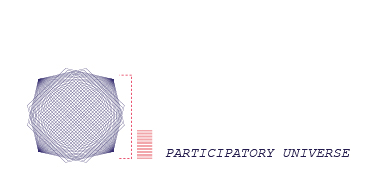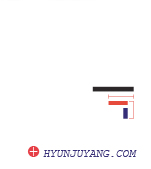


CONCLUSION
Near the end of my thesis year, I discovered that some part of the visual components from the diagram, which depicts my own visual interpretation of the structure of a multidimensional world, resembled resembled a computer-generated graph of a formulation of an infinity of possible trajectories to compute a probability. This graph of a single photon exploring alternate paths in two spatial dimensions implements Nobelist physicists, Richard Feynman’s sum-over path formulation.
It may be considered as a mere coincidence, however this event significantly changed the way I think. I have struggled searching for systematic connections between this abstract concept and something that describes our purpose of existence. I firmly believe that no matter how complicatedly our life is netted and varied, all human life is part of an immense system of the universe. I was trying to look for the proper metaphor from that human life in order to introduce and communicate my topic in a more inviting manner to others.
Discovering the graph matching my visual interpretation on a similar subject gave me motivation to finally realize that my working process was part of seeking the purpose of my existence. During the previous six months, I was separating the course of my investigation from the subject matter. Failure to notice this became the reason why I had been not be able to find a suitable metaphor for the subject.
The answer was the question itself. Existence cannot be described in one word or certain set of behavior and phenomena, it is the whole and that is the way it is. The behavior of questioning and attempt of seeking self-existence itself explains our purpose of life. To those expecting a deterministic outcome, it may sound disappointing and nihilistic, yet this conclusion drives us to an interesting assumption that we are part of many-worlds. In a cosmic view, each of us behave like little particles comprising both a physical and meta-physical world. Each of us are microscopic devices of constant generation of a new dimension of possibility. A theory of everything might not exist, yet we are part of the theory.
One of the leading physicists and theorists in contemporary science once said, “We are just chemical scum, on the surface of a typical planet, which is in orbit around a typical star, on the outskirts of a typical galaxy.” This is an interesting point of view, to juxtapose human beings and the universe. He explicitly and precisely described the physical dimension and capability of humans in the context of the entire universe. However, no matter how trivial we may be when compared to the entire universe, that we are part of the universe itself, and that the universe cannot be complete without us. Besides, I believe that humans have much more value than just “chemical scum.” We are conscious and intelligent entities, possessed of a determination to live our lives and explore the mysteries vigorously; we perceive, explore, and try to find out what is around us and how it affects our lives. Like a microscopic system that reflects the macroscopic system, we are intricate microscopic entities that possess limitless ideas that reflect the universe.
I think human life is a recursive process; it is expressed through its process, and the process of life completes life itself. Life is an infinite process of learning and reflection on previously acquired knowledge. And, one’s knowledge is intricately shaped with belief and memory. Nonetheless, this simple recursive structure is packed with the infinite variation and diversity that makes life unpredictable, and therefore interesting. And, as an intelligent entity, within that structure, we interact with our environment, which is a part of the universe, consuming, creating and emitting information restlessly. With human creativity and imagination, knowledge is constantly refined, reformed and reinterpreted over decades. While we improve and develop our life using the products of our embodied and accumulated knowledge, such as technology, philosophy, art and design, we also utilize those products of knowledge as stepping-stones to map the unexplored. We observe, explore, learn, reflect, learn from ourselves and explore again. We are filling up our lives as we are living in a repetitive algorithm, and this process of life defines our being.
From the view of contemporary cosmology, our universe is a closed system without observers existing outside of the universe. It just shines as a constantly oscillating cluster of uncertainty. Although our reasoning is illusional, we are living and participating in our version of the universe. We are drawing the trajectory of ourselves as we live. Max Planck, one of the most influential physicists in the 20th century and the founder of Quantum theory, once said, “Science cannot solve the ultimate mystery of nature, because in the final analysis we are part of the mystery we are trying to solve.”
FURTHER DIRECTION
In the beginning of my thesis, I asked myself the question, “What can designers learn from scientists?”
I was inspired by the interpretations of theoretical physicists on the varying whimsical systems of our physical nature. Initially, I struggled to understand them, however as time went on I found myself absorbed in the world of both logical analysis and the philosophical aspects of contemporary physics and cosmology. As I came to grasp the concepts, I worked on diagraming those conceptual ideas. By utilizing my intuitive aesthetics as an artist and designer, I carefully articulated the counter-intuitive ideas of quantum physics and cosmology, and sometimes filled the gap between one interpretation and another in a clear visual language.
During the middle of my process, a new question came to me. “What can scientists learn from designers?”
I often hear that sometimes scientists have difficulty visualizing the logical process in their mind. At the end of my thesis year, I visited California Technical University and met with some Ph.D. Students from the Astrophysics department. They not only revised the partial contents from the diagram, but also gave me a quite interesting reaction to the artwork I had created; I got the impression that my work somehow excited them as well and they were willing to work with me in the future.
I am not fully able to fulfill my thesis’ second question as a designer at this time, yet I envision a significant possibility to fulfill it. What I’m seeking for the future is pursuing this goal as a designer. I hope to also initiate a third phase, my ultimate goal being to create a designed artifact that reflects the new strategy for the 21st century, a fusion of human aesthetics, new science and their philosophical responses.
“How can design and science be fused?”